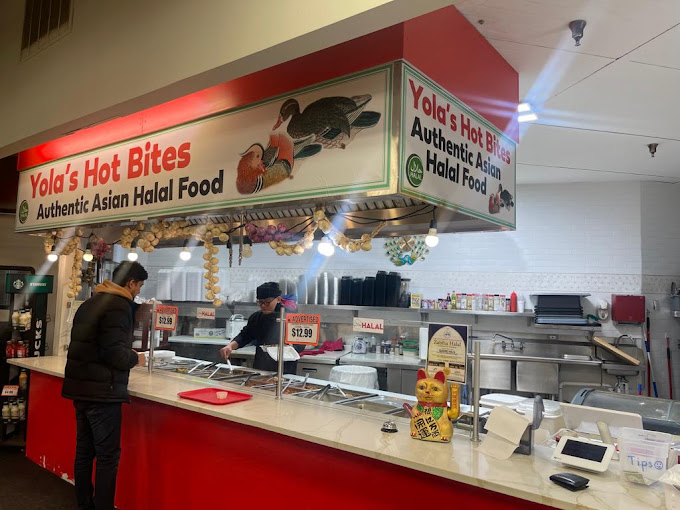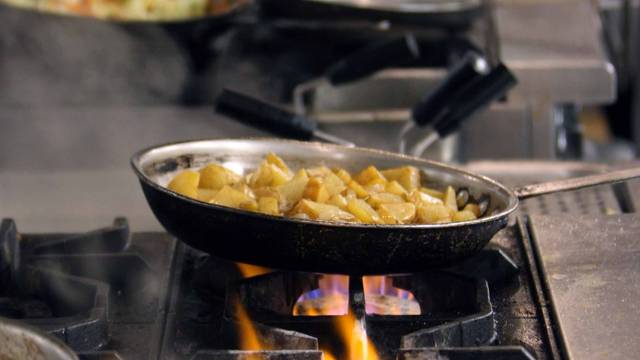Asian Restaurant ISB: A Must-Try Spot for Food Lovers in Islamabad
Wiki Article
Savor Genuine Asian Cuisine With a Pan-Asian Spin for a Culinary Adventure
Embarking on a culinary trip via genuine Oriental cuisine, boosted with a Pan-Asian spin, uses an one-of-a-kind possibility to check out the rich tapestry of flavors that specify the area's diverse culinary customs. This experience invites you to enjoy the elegant equilibrium of tastes-- pleasant, salted, spicy, and sour-- balanced by fragrant natural herbs and flavors. Think of the innovative blend of Thai curry and ramen or the unforeseen pleasure of sushi burritos. As you contemplate these luring meals, consider the cultural narratives and historic influences that shape them, each bite providing a tale waiting to be found.
Discovering Pan-Asian Flavors
In the world of international gastronomy, Pan-Asian cuisine stands apart for its exceptional diversity and the harmonious interplay of tastes from numerous Oriental cultures. This culinary method commemorates the one-of-a-kind active ingredients and rich traditions located throughout the continent, developing a tapestry of preferences that is both rewarding and fascinating. Key to Pan-Asian cuisine is its ability to stabilize contrasting tastes-- pleasant, salted, spicy, and sour-- while highlighting the freshness and quality of each component.From the umami-rich soy sauce of Japan to the intense chili peppers of Thailand, Pan-Asian cuisine provides a considerable scheme of flavors. These elements are commonly incorporated in creative means, boosting meals with layers of complexity. For instance, making use of aromatic natural herbs such as lemongrass and cilantro, usual in Vietnamese and Thai cuisine, adds a rejuvenating illumination to dishes, while the unification of coconut milk provides a creamy, rich structure.
The focus on fresh fruit and vegetables and fragrant seasonings makes certain that each meal is not just a banquet for the taste but also for the detects. Pan-Asian food invites diners to begin on a cooking trip, checking out the vast and differed landscapes of Oriental gastronomy with every bite.
Combination Meals to Try
While Pan-Asian food is celebrated for its standard tastes, the modern culinary landscape is progressively welcoming fusion recipes that blend these timeless elements with impacts from various other regions. This cutting-edge strategy not only honors the rich heritage of Asian culinary arts but also presents novel taste experiences that appeal to contemporary tastes buds.
A prime example of such a blend recipe is the Korean-Mexican taco, where marinated bulgogi beef is wrapped in a warm tortilla, topped with kimchi and a zesty gochujang-infused salsa. This combination weds the bold, mouthwatering flavors of Korea with the vivid, fresh elements of Mexican cuisine. Likewise, sushi burritos have actually obtained appeal, amalgamating the fragile virtuosity of Japanese sushi with the hearty, hand-held ease of a burrito, commonly featuring fusion ingredients like tempura shrimp and avocado with a drizzle of wasabi mayo.
Another notable dish is Thai curry ramen, which instills the creamy, fragrant seasonings of Thai curry into the soothing broth of conventional Japanese ramen, developing an unified mix that entices the senses. These fusion recipes expand past simple novelty; they represent a cooking discussion in between cultures, encouraging exploration and advancement on the planet of Pan-Asian food.
Crucial Active Ingredients and Seasonings
To absolutely value Pan-Asian food, one need to comprehend the essential ingredients and flavors that form its structure. This diverse culinary design draws from an abundant tapestry of Asian customs, using a harmonious mix of tastes and structures. Trick components include soy sauce, fish sauce, and oyster sauce, which pass on a mouthwatering umami deepness important to Oriental dishes. Corresponding to these are rice vinegar and mirin, offering a fragile level of acidity and sweetness.Aromatic elements are crucial, with ginger, garlic, and lemongrass being ubiquitous throughout numerous Pan-Asian recipes. These active ingredients give a great smelling base that enhances the complexity of tastes. Flavors such as star anise, cardamom, and cinnamon present heat and personality, resembling influences from areas like China and India.

Food Preparation Strategies and Tips
Understanding Instagrammable restaurants Islamabad the art of Pan-Asian cuisine needs familiarity with its distinctive cooking techniques, each adding to the vivid tapestry of tastes this culinary practice is celebrated for. Central to these techniques is the stir-fry, a fast cooking strategy that preserves the nutritional honesty and dazzling colors of ingredients. Making use of a wok, the stir-fry technique allows for also heat distribution, important for attaining the particular appearance and taste equilibrium of Pan-Asian meals.One more essential strategy is steaming, especially prevalent in Chinese cuisine. This mild approach keeps the all-natural flavors and nutrients of ingredients, making it optimal for fish and shellfish and vegetables. Dumplings, a precious staple, typically take advantage of steaming, causing soft, delicious textures.
Barbecuing, additionally integral, presents smoky depths to meals such as Oriental bulgogi or Japanese yakitori (Chinese food Islamabad). This technique typically entails marinating ingredients, enabling tastes to permeate deeply prior to cooking over an open flame or warmer
Last but not least, grasping the art of stabilizing tastes-- sweet, sour, salted, bitter, and umami-- is crucial. Effectively layering these aspects can boost a meal from ordinary to phenomenal, offering a complicated and satisfying culinary experience that personifies the essence of Pan-Asian cuisine.
Dining Experiences Worldwide
Around the world, Pan-Asian food supplies an unmatched dining experience, celebrated for its rich tapestry of flavors and vibrant presentations. This cooking sensation has actually gone beyond social boundaries, catching the hearts and tastes buds of food fanatics worldwide. In multicultural cities fresh York, London, and Sydney, Pan-Asian dining establishments serve as melting pots where cooking traditions from Thailand, Japan, China, and beyond assemble, offering restaurants with an eclectic mix of recipes that highlight the area's variety.The global charm of Pan-Asian cuisine depends on its capability to supply both credibility and development. Cooks skillfully marry conventional components such as lemongrass, soy sauce, and miso with contemporary methods, causing recipes that are both refreshingly brand-new and familiar. This blend allows diners to start a culinary journey that values heritage while accepting modernity.
Furthermore, dining experiences are raised with attentively designed atmospheres that mirror the principles of Pan-Asian aesthetics. From minimal Japanese-inspired insides to dynamic Thai-themed spaces, each restaurant offers an one-of-a-kind ambiance that complements the culinary offerings. Therefore, clients are not just eating a dish but partaking in a cultural experience, making Pan-Asian eating a really worldwide sensation.
Final Thought
The exploration of Pan-Asian cuisine supplies a profound understanding of the intricate interplay of tastes and cooking traditions throughout Asia. By welcoming fusion meals such as Thai curry ramen and sushi burritos, the cooking trip not just highlights the adaptability of typical components however likewise showcases innovative modern techniques. This gastronomic journey, improved by important seasonings and cooking approaches, supplies a distinct chance to value the cultural variety and culinary creativity that define Pan-Asian food on an international range.Beginning on a cooking journey via genuine Asian cuisine, improved with a Pan-Asian spin, supplies a special opportunity to discover the rich tapestry of tastes that specify the region's varied culinary traditions.In the world of international gastronomy, Pan-Asian food stands out for its amazing variety and the harmonious interplay of flavors from numerous Oriental societies. Key to Pan-Asian food is its ability to balance different flavors-- sweet, salted, spicy, and sour-- while highlighting the freshness and quality of each ingredient.

Report this wiki page